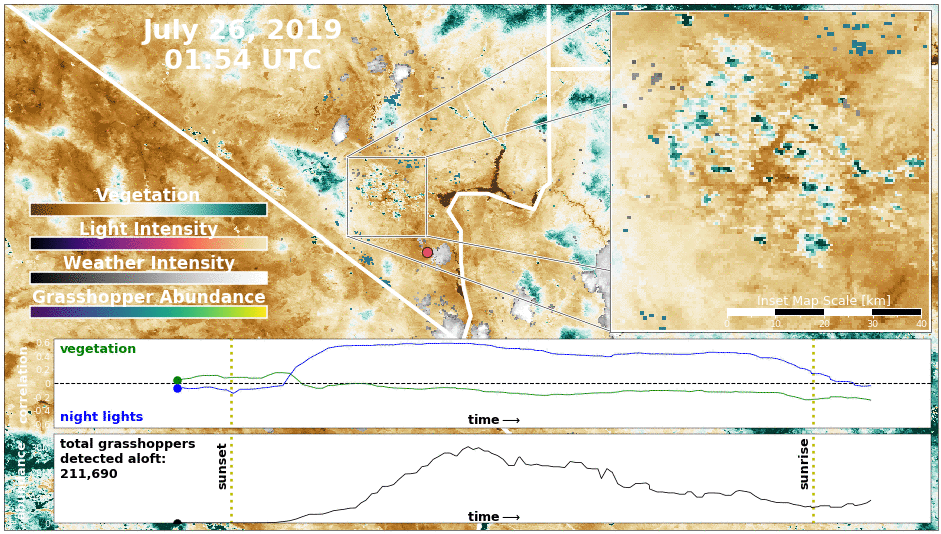The expansion of artificial night lights globally has had important impacts on animal behavior and health, recent studies have shown. A study led by a research team at the University of Oklahoma on the effects of bright city lighting on grasshoppers will appear in the next issue of the journal Biology Letters.
Elske Tielens, a postdoctoral research fellow conducting research at the Corix Plains Institute at OU, is lead author on the study, “Nocturnal city lighting elicits a macroscale response from an insect outbreak population,” which represents the first analysis of lights at night on insect movement at regional scales. The study was supported by a grant from the National Science Foundation (EF-1840230).
Analyzing weather surveillance radar in June and July 2019, Tielens found that some 45 million grasshoppers – a “biblical plague” – took flight during the outbreak peak, concentrating over city lighting such as the Las Vegas strip. The group also found daily movement cycles of dusk ascent from vegetated habitat toward lit urban areas after dark.
This study is novel, Tielens said, because the effects of artificial lights at night on the behavior of insects at large scales have not previously been documented in a quantitative way. It shows how insects are interacting with the landscape, including human made environments. Given that humans are, and continue to, influence the environment, it is important to understand the effects this has on insect populations. This knowledge can help researchers both conserve our diverse world of insects, as well as manage important pest species.
Another reason this study is interesting, Tielens added, is because using weather radar to follow how insects respond to artificial night lights hasn't been done before.



